Abstract
The levels of polychlorinated biphenyls (PCBs) in human milk provide an index of exposure of the mother to these compounds and enable the intake by the breast-fed child to be estimated. For valid comparisons between different studies, concentrations should be expressed on a milk fat basis. In a recently completed UNEP/WHO pilot project on monitoring of organochlorine compounds in human milk in ten countries, great emphasis was placed on analytical quality assurance. To obtain comparable data, a common procedure, that of Sawyer, was adopted for quantitation of PCBs, using Aroclor 1260 as standard. In addition, certain criteria (e.g., age and parity) were established for selection of the mothers to be sampled. In contrast to the situation with p,p'-DDT and p,p'-DDE, the levels of PCBs in human milk fat were higher in the European countries and Japan than in China, India and Mexico. In fact, PCBs were not detected in human milk in the latter three countries. Although PCBs were detected in some samples in the USA, the median level was below the limit of detection of the method used there (1 mg/kg fat). The median PCB levels reported from Belgium, Israel, Japan and Yugoslavia were 0.81, 0.45, 0.35 and 0.63 mg/kg fat, respectively. Higher median levels were reported from Sweden and the Federal Republic of Germany (0.97 and 2.1 mg/kg fat, respectively). The German samples were not analyzed by the Sawyer method.
Full text
PDF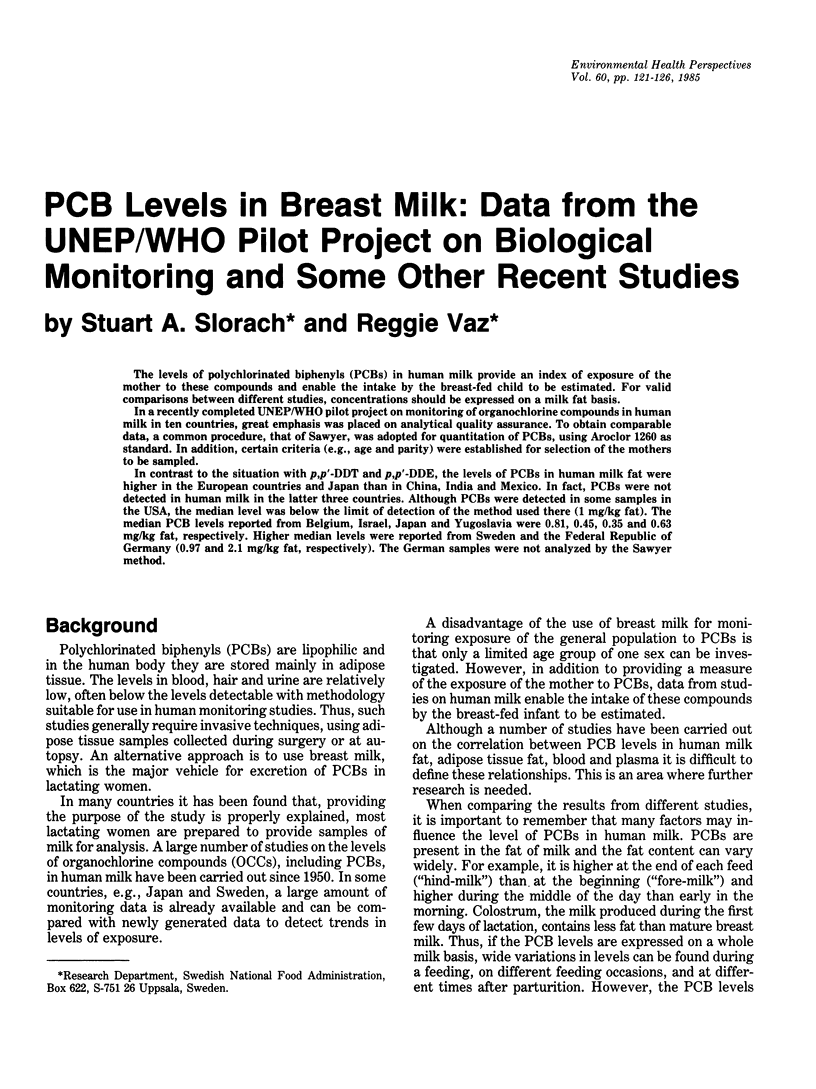
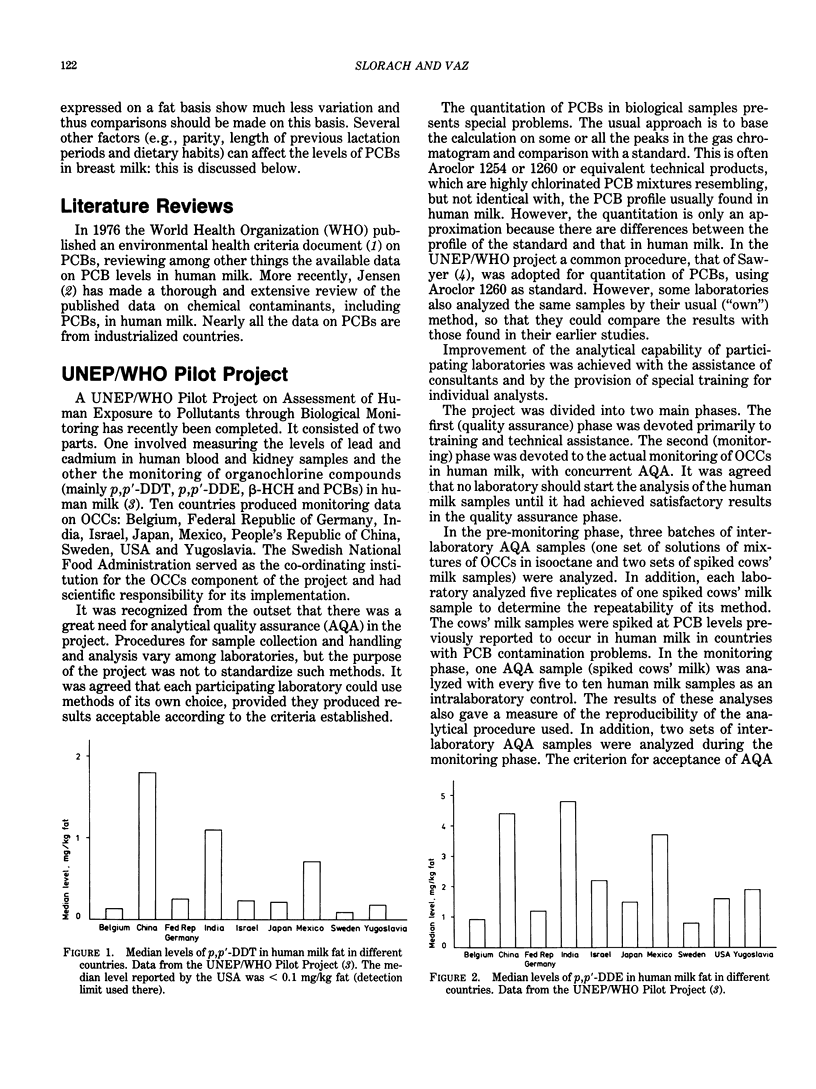
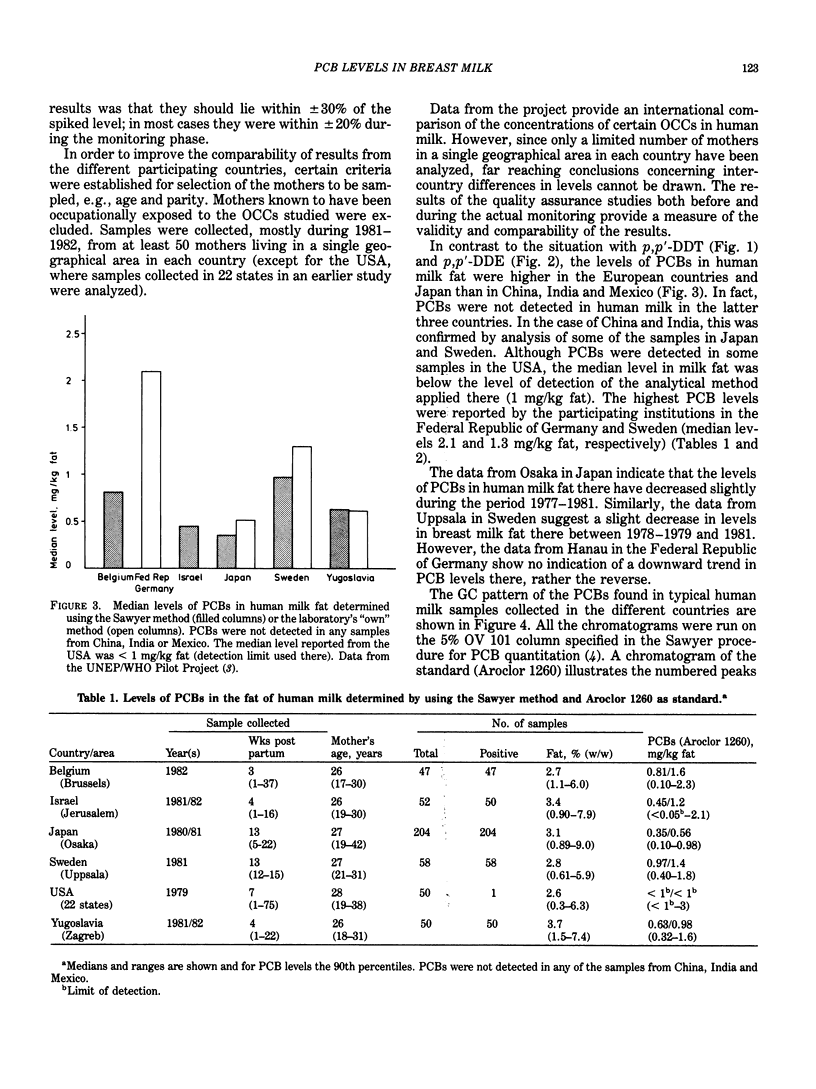
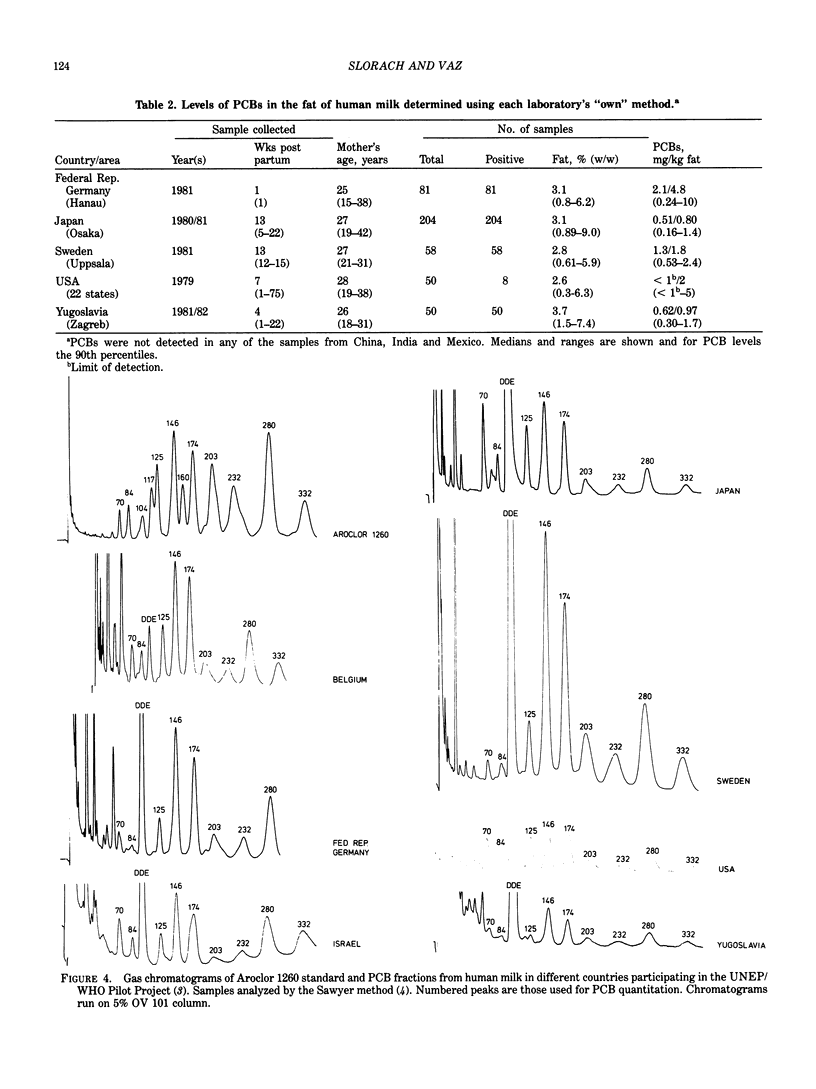

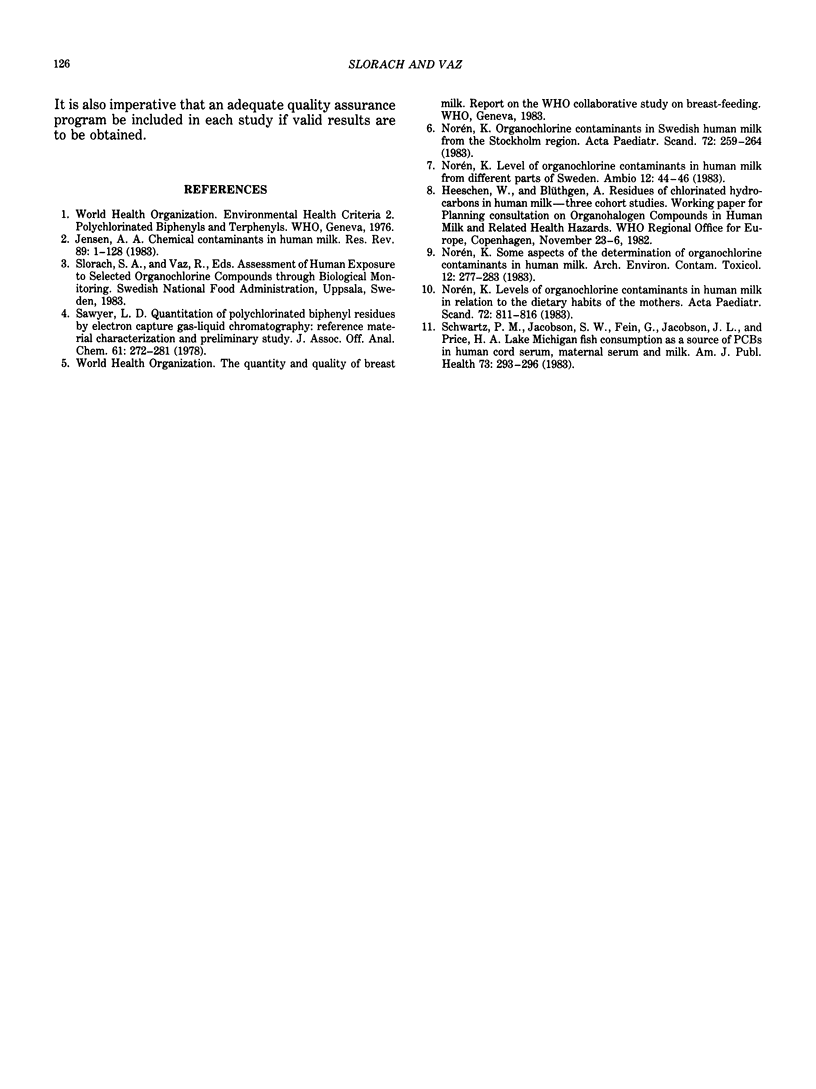
Selected References
These references are in PubMed. This may not be the complete list of references from this article.
- Jensen A. A. Chemical contaminants in human milk. Residue Rev. 1983;89:1–128. doi: 10.1007/978-1-4612-5601-4_1. [DOI] [PubMed] [Google Scholar]
- Norén K. Levels of organochlorine contaminants in human milk in relation to the dietary habits of the mothers. Acta Paediatr Scand. 1983 Nov;72(6):811–816. doi: 10.1111/j.1651-2227.1983.tb09821.x. [DOI] [PubMed] [Google Scholar]
- Norén K. Organochlorine contaminants in Swedish human milk from the Stockholm region. Acta Paediatr Scand. 1983 Mar;72(2):259–264. doi: 10.1111/j.1651-2227.1983.tb09708.x. [DOI] [PubMed] [Google Scholar]
- Norén K. Some aspects of the determination of organochlorine contaminants in human milk. Arch Environ Contam Toxicol. 1983 May;12(3):277–283. doi: 10.1007/BF01059403. [DOI] [PubMed] [Google Scholar]
- Sawyer L. D. Quantitation of polychlorinated biphenyl residues by electron capture gas-liquid chromatography: reference material characterization and preliminary study. J Assoc Off Anal Chem. 1978 Mar;61(2):272–281. [PubMed] [Google Scholar]
- Schwartz P. M., Jacobson S. W., Fein G., Jacobson J. L., Price H. A. Lake Michigan fish consumption as a source of polychlorinated biphenyls in human cord serum, maternal serum, and milk. Am J Public Health. 1983 Mar;73(3):293–296. doi: 10.2105/ajph.73.3.293. [DOI] [PMC free article] [PubMed] [Google Scholar]


